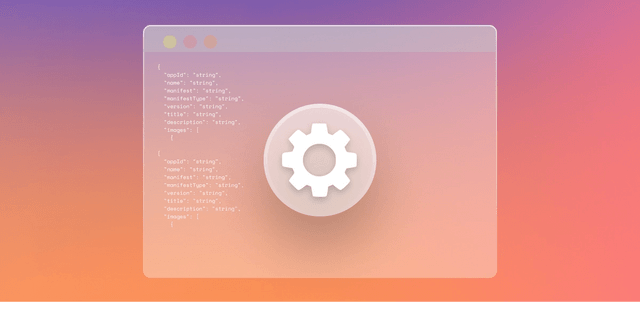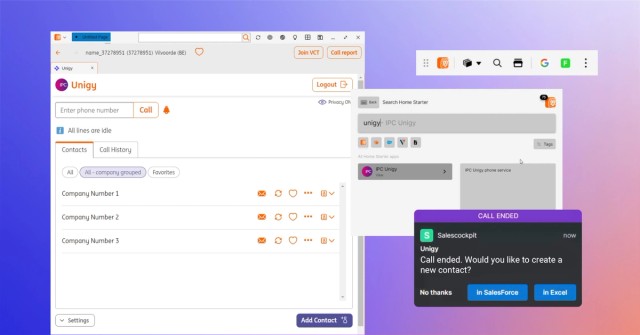August 29, 2018
Software Packaging for Financial Firms Must Go

This blog was first published on Traders Magazine
To accelerate innovation, we need to bring about the end of software packaging
When Salesforce.com was founded in 1999, founder and CEO, Marc Benioff defined the company’s mission in a simple statement: “The End of Software”. At the time, customer relationship management (CRM) systems were dominated by heavy and complex software which required installation both on the front end and back end. Benioff saw the enormous opportunity for the internet to completely eliminate the need for software installation and make CRMs easily accessible to enterprise users.
In his terrific book, Behind the Cloud, Benioff describes this guiding principle that made Salesforce the poster child for software-as-a-service (SaaS): “We believed in the End of Software—that all companies would eventually use the Internet to replace all the software they once installed on PCs.” Despite widespread skepticism in the early days, by 2008 the CRM landscape had been fundamentally transformed and Benioff marveled: “Finally, The End of Software is here.”
And yet, 10 years later, installed software is still rampant in the financial services industry.
Tens of thousands of applications installed on PCs power global markets. Banks, buy-side firms and brokers use these installed applications for trading, order management, trade capture, risk, analytics, market data, news, research, collaboration and more. The process for installing these applications virtually hasn’t changed in more than two decades — since before Salesforce’s founding.
According to a new report from Greenwich Associates, “slow and inefficient software development processes cost financial services firms $1.5 billion in aggregate.” The report specifically cites the enterprise software installation process known as “software packaging”.
For those not familiar, it’s ‘quite simple’:
- An end user at a bank becomes interested in a vendor application.
- The user encourages the vendor to reach out to the bank’s software packaging team.
- The software packaging team then asks the vendor to deliver the software, often through a Microsoft Installer (MSI).
- The software is then installed in a testing environment where different testing is performed, depending on the bank. This can include “static” and “dynamic” analysis of the software to scan for security threats.
- The review often also includes a lengthy, bespoke questionnaire that the vendor must complete. “Where is your datacenter?”, “Is it protected by armed guards?”, etc.
- Once the reviews are completed successfully, the team “packages” the software and makes it available on central infrastructure at the firm.
- A request is then made to “push” the package to the desktop of the user who requested the software.
See how easy it is? A vendor providing software, such as a market data application, goes through this process individually with every bank. It can take months or quarters to install a single app on end user desktops, resulting in an enormous waste of time and money for both vendors and banks.
As the Greenwich Associates report explains, this delays getting innovation in the hands of end users, the opportunity cost of which is incalculable.
Salesforce has never had to deal with the dreaded software packaging process. In order to get Salesforce, an end user opens her browser and types “www.salesforce.com”. Instantly, the Salesforce application appears. There’s no downloading, no IT security approval, no software packaging. There’s no need to do any of these things because there’s no software being installed on the PC. The web browser is the software that is already installed and it has been heavily tested to ensure desktop security.
So why are we spending $1.5 billion a year in financial services to deliver software the hard way?
Why can’t financial services providers be more like Salesforce and all the other SaaS platform providers in the world? It’s because traders, salespeople, research analysts, portfolio managers and other financial end users have user experience requirements that are well beyond those of most mortal users. Financial applications require an App Experience; the browser experience is severely limited.
The App Experience is a requirement because screen real estate is scarce on financial desktops. Users needs multiple monitors just to cram in all their apps. They size each window carefully to display as much information as possible at a glance. They minimize half their windows, expecting them to popup when something important happens. They shut down their apps and expect all the windows to be in the same place when they launch them next time. Sound familiar?
Browsers, by definition, do not provide the App Experience. Consider the analogy on mobile. Do you prefer to use a website in the mobile browser? Or do you prefer to use an App? The same is true of an app on the financial desktop – all the more so when ergonomic and user experience improvements can result in millions of dollars being made or lost as a result of missing a trade, creating a trading error or any number of other time-sensitive and business critical activities.
We need to move to App Experience
To bring about The End of Software Packaging in financial services, we need something more than a web browser. We need software that is similar to a browser but crucially provides the App Experience. Some people refer to it as a “container,” but that term is confusing because it is used to refer to lots of unrelated technologies both inside and outside of finance. To avoid ambiguity, we’ll call it “browser-like App Experience software”.
This new browser-like App Experience software should be modelled on browser technology and architecture:
- Apps should be delivered via the web
- We should reuse all the existing internet security we have already implemented
- Apps should not be installed on the desktop
- The browser-like App Experience software should ensure security
- We also need the browser-like App Experience software to be already installed
This last point is the most critical. We don’t want every app provider to install their own browser-like App Experience software any more than we want every website provider installing their very own web browser.
We need standardization.
Today, every desktop at every bank, broker and buy-side firm has a web browser already installed on it. Similarly, the browser-like App Experience software belongs on every desktop right next to the web browser. As an industry, we need to standardize around software for running apps in the same way that we’ve already standardized on software for running websites.
If we do this, we can dramatically accelerate innovation. We can get better tools in the hands of end users faster. We can slash software packaging and maintenance costs and make life easier for 3rd party vendors. We can join the Silicon Valley tech revolution where they stopped installing desktop software a long time ago.
We have the technology today and, at an annual cost of $1.5 billion to the industry, all firms have the financial incentives to help bring about the End of Software Packaging.
Enjoyed this post? Share it!
Related Posts
All Posts ->
Featured
Enhanced Deployment Flexibility with OpenFin's Fallback Manifests
Thought Leadership

Featured
ING Integrates OpenFin for Salesforce to Optimize Workflows
Thought Leadership